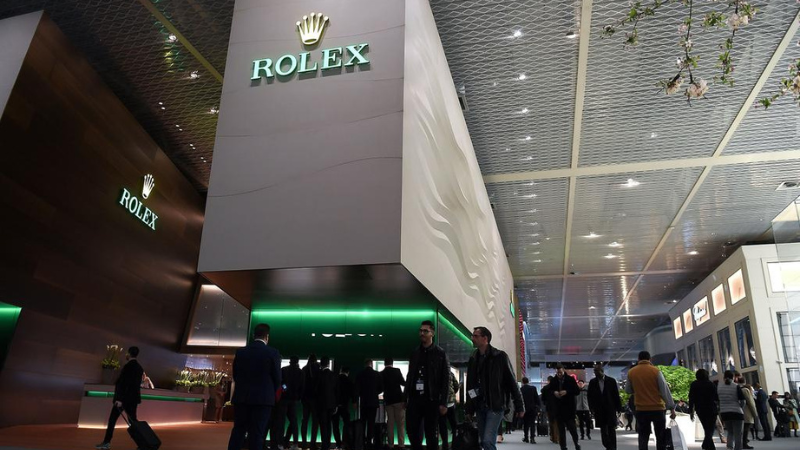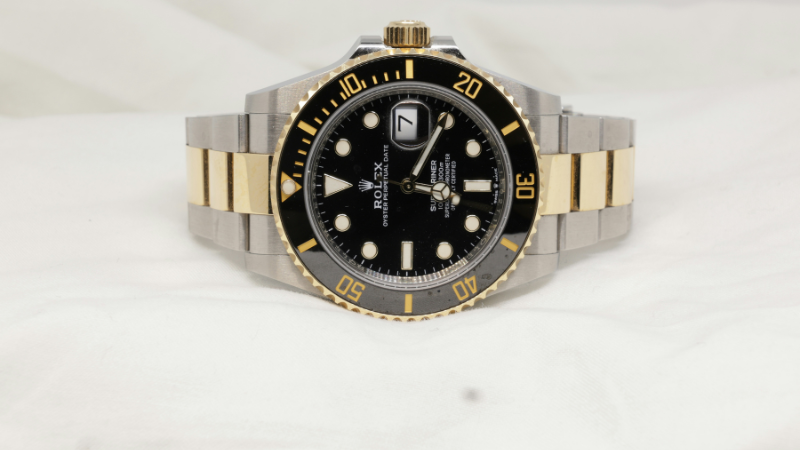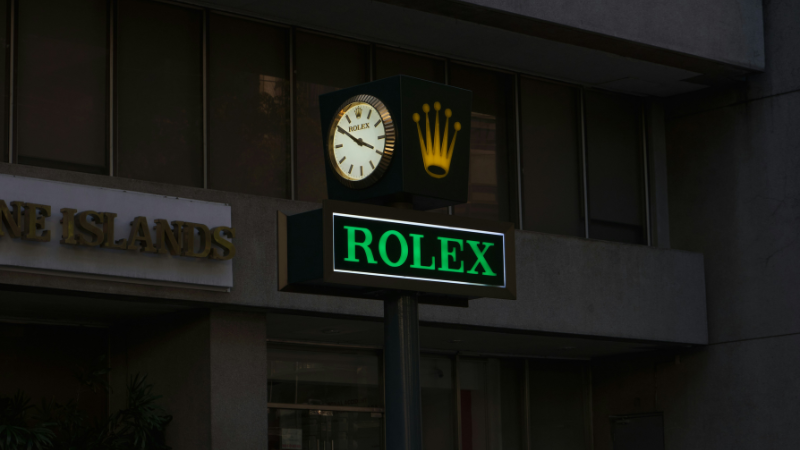As an experienced horologist with over an exploration of hands-on experience in the luxury watch industry, I, Ahmad Khan, have had the privilege of delving deep into the world of high-end timepieces. My journey has taken me from the bustling watch markets of Geneva to the intricate workshops where master craftsmen bring these marvels to life. Today, I’m excited to share my insights on one of the most pressing questions in the horological world: Where are real Rolex watches made?
This article aims to unravel the mystery surrounding Rolex production, drawing on my extensive research, interviews with industry insiders, and firsthand observations. We’ll explore the fascinating history, cutting-edge technology, and meticulous craftsmanship that go into creating these iconic timepieces.
Dr. Elizabeth Doerr, a renowned watch journalist and expert, once told me, “Rolex isn’t just a watch; it’s a testament to Swiss precision and innovation.” This sentiment echoes throughout the industry and forms the foundation of our exploration today.
So, let’s embark on this horological journey together, peeling back the layers of mystery to reveal the true birthplace of Rolex watches.
Rolex crafts its timepieces exclusively in Switzerland, with meticulous attention at each of its four facilities.
Where Are Real Rolex Watches Made: Let’s Explore
Owning a Rolex is more than just a watch, it’s a badge of meticulous Swiss craftsmanship. While the brand’s global recognition speaks for itself, the true intrigue lies in its creation process.
Forget mass production lines! Rolex boasts four specialized workshops across Switzerland, each meticulously crafting specific components – from the intricate movements in Bienne to the luminous dials in Chêne-Bourg.
This geographic symphony ensures every Rolex is a masterpiece, born from the collective expertise of a nation renowned for watchmaking excellence.
The Rolex Legacy: A Brief History
From London to Geneva: The Birth of an Icon
Contrary to popular belief, Rolex’s story doesn’t begin in Switzerland. The company was founded in London, England, in 1905 by Hans Wilsdorf and his brother-in-law Alfred Davis. Initially named “Wilsdorf and Davis,” the company focused on distributing timepieces rather than manufacturing them.
However, Wilsdorf had a vision. He believed wristwatches could be both elegant and reliable, a concept that was revolutionary at the time. In 1908, he registered the trademark “Rolex,” a name chosen for its ease of pronunciation in multiple languages and its association with the sound of a watch being wound.
The Swiss Connection
In 1919, post-World War I taxes in England prompted Wilsdorf to move the company to Geneva, Switzerland. This move wasn’t just about finances; it was a strategic decision that would shape the future of Rolex.
Switzerland, already renowned for its watchmaking expertise, provided the perfect environment for Rolex to flourish. The country’s longstanding tradition of precision engineering and its pool of skilled craftsmen were instrumental in elevating Rolex to new heights of horological excellence.
Who Makes Rolex Watches?
Delving into the rich tapestry of horological history, we uncover the captivating saga of Rolex, a name synonymous with luxury timepieces and Swiss precision. At the helm of this iconic brand’s inception was Hans Wilsdorf, a visionary watchmaker whose passion for innovation would forever alter the landscape of wristwatch manufacturing.
At the dawn of the 20th century, Wilsdorf and his brother-in-law Alfred Davis laid the foundation for what would become a horological empire, starting with their London-based company, Wilsdorf & Davis. Their journey from distributing timepieces to crafting their watches equipped with high-precision Swiss movements marked the birth of a legend.
The Rolex brand, officially registered in 1908, quickly became a beacon of excellence in watchmaking. Wilsdorf’s legacy, safeguarded by the Hans Wilsdorf Foundation after his passing in 1960, ensures that the artistry, innovation, and unparalleled craftsmanship of Rolex watches continue to set the gold standard in the world of luxury timepieces.
Plan-les-Ouates, Switzerland
Nestled in the picturesque suburb of Plan-les-Ouates, Switzerland, lies a marvel of modern watchmaking – the Rolex Centre of Excellence for Creating Cases. This sprawling 58-acre facility is where the iconic Rolex aesthetic takes physical form, transforming raw metals into the revered cases and bracelets that adorn wrists worldwide. Here, cutting-edge technology dances with time-honored Swiss craftsmanship in a mesmerizing ballet of precision.
Forging masters to conjure corrosion-resistant alloys into legendary Oyster cases, while robotic marvels and skilled artisans collaborate to birth the distinctive Jubilee and Oyster bracelets. The air hums with the alchemy of creation as fluted bezels emerge and center links are lovingly polished to perfection. This fortress of innovation embodies Rolex’s unwavering commitment to vertical integration, ensuring unparalleled quality control from raw material to finished product. As each gleaming case and bracelet journeys back to Geneva for its final transformation, it carries with it the essence of Plan-les-Ouates – the beating heart of Rolex’s relentless pursuit of horological excellence.
The Heart of Rolex Production: Swiss-Made

The Meaning of “Swiss Made”
When we talk about where Rolex watches are made, it’s crucial to understand the significance of the term “Swiss Made.” This isn’t just a marketing slogan; it’s a legally protected designation that comes with strict requirements.
According to the Federation of the Swiss Watch Industry:
- At least 60% of the production costs must be generated in Switzerland
- The movement (the engine of the watch) must be Swiss
- The watch must be assembled in Switzerland
Rolex doesn’t just meet these requirements; they exceed them. Industry insiders estimate that Rolex watches are about 95% Swiss-made, far surpassing the legal minimum.
Rolex’s Four Key Production Sites
Rolex’s production is centered in Switzerland, spread across four main sites:
- Plan-les-Ouates, Geneva: The headquarters and main assembly site
- Bienne: Movement production
- Chêne-Bourg: Dial production and gem-setting
- Les Acacias, Geneva: Case and bracelet production
Let’s take a closer look at each of these sites and their role in creating Rolex timepieces.
The Rolex Headquarters, Geneva
Nestled in the heart of Geneva, Switzerland’s horological haven, the Rolex headquarters stands as a testament to precision engineering and timeless luxury. This iconic green-façaded edifice in Les Acacias, erected in 1965, is not merely a building but the pulsating core of Rolex’s watchmaking empire.
Here, in this sanctuary of innovation, over 500 groundbreaking patents have been born, each one pushing the boundaries of horological excellence. The Geneva headquarters orchestrates a symphony of craftsmanship across four strategic sites: Bienne’s movement mastery, Plan-les-Ouates’ case and bracelet artistry, Chêne-Bourg’s dial and bezel wizardry, and Geneva’s final assembly prowess.
With a fifth site under construction in Bulle, Rolex continues to expand its realm of perfection. This tightly controlled network ensures that every Rolex timepiece embodies the pinnacle of Swiss watchmaking tradition. Shrouded in secrecy and inaccessible to the public, the Rolex headquarters remains an enigmatic beacon of excellence, guarding its trade secrets as meticulously as it crafts its legendary timepieces.
Inside Rolex’s Swiss Facilities

Plan-les-Ouates: The Heart of Rolex
The Rolex headquarters in Plan-les-Ouates, Geneva, is often referred to as the “Rolex Palace.” This state-of-the-art facility opened in 2002, is where the final assembly of Rolex watches takes place.
Key features of the Plan-les-Ouates facility:
- 10 floors (4 underground)
- Over 1 million square feet of space
- Houses research and development, design, and quality control departments
- Final assembly and testing of watches
According to Jean-Frédéric Dufour, CEO of Rolex, “Our Plan-les-Ouates site is where the Rolex magic happens. It’s where all the components come together to create the final masterpiece.”
Bienne: The Beating Heart of Rolex Watches
Located about 100 kilometers northeast of Geneva, the Bienne facility is where Rolex produces its in-house movements. This site, which employs over 2,000 people, is a testament to Rolex’s commitment to vertical integration.
Key aspects of the Bienne facility:
- Produces all Rolex movements
- Houses advanced machinery for precision cutting and assembly
- Employs both cutting-edge technology and traditional hand-craftsmanship
Dr. Helmut Crott, a noted watch expert and auctioneer, once remarked, “The Bienne facility is where Rolex’s true horological prowess shines. The level of precision and innovation happening there is unparalleled in the industry.”
Chêne-Bourg: Where Art Meets Engineering
The Chêne-Bourg site, located just outside Geneva, is dedicated to dial production and gem setting. This facility showcases Rolex’s commitment to aesthetics and precision in equal measure.
Notable features of the Chêne-Bourg site:
- State-of-the-art dial production techniques
- Houses Rolex’s gem-setting experts
- Produces some of the most intricate and visually stunning components of Rolex watches
Les Acacias: Crafting the Rolex Exterior
The Les Acacias facility in Geneva is where Rolex produces its iconic cases and bracelets. This site is crucial in creating the distinctive look and feel of Rolex watches.
Key aspects of the Les Acacias facility:
- Houses Rolex’s proprietary foundry for producing gold alloys
- Utilizes advanced robotics for case production
- Employs skilled craftsmen for final finishing and polishing
The Rolex Production Process: From Raw Materials to Finished Timepiece
Step 1: Movement Production (Bienne)
The journey of a Rolex watch begins in Bienne with the production of the movement. This intricate process involves:
- Cutting and shaping raw materials
- Assembly of over 200 individual components
- Precision testing and adjustment
Step 2: Case and Bracelet Production (Les Acacias)
While the movement is being crafted in Bienne, the case and bracelet production begins in Les Acacias:
- Melting and alloying of precious metals
- Casting and machining of case components
- Bracelet link production and assembly
Step 3: Dial and Hands Production (Chêne-Bourg)
Simultaneously, the dial and hands are being crafted in Chêne-Bourg:
- Dial blank production
- Application of indices and logos
- Handcrafting and finishing
Step 4: Final Assembly and Quality Control (Plan-les-Ouates)
All components converge at the Plan-les-Ouates facility for final assembly:
- Movement installation
- Dial and hand-fitting
- Case sealing
- Extensive water resistance and accuracy testing
The Human Touch: Craftsmanship in the Age of Technology
While Rolex employs cutting-edge technology in its production process, the human element remains crucial. Master watchmakers oversee every step of the process, ensuring that each timepiece meets Rolex’s exacting standards.
As noted watchmaker Peter Roberts once told me, “A Rolex isn’t just a product of machines; it’s a testament to human skill and dedication. The blend of traditional craftsmanship and modern technology is what sets Rolex apart.”
Rolex Production by the Numbers
To give you a clearer picture of Rolex’s production scale, here’s a table with some key figures:
| Metric | Value |
| Annual Production | Approximately 1 million watches |
| Number of Employees | Over 30,000 worldwide |
| Production Sites | 4 main facilities in Switzerland |
| Components in a Typical Rolex | Over 200 |
| Time to Produce One Watch | Approximately 1 year |
These numbers underscore the scale and complexity of Rolex’s operations, all centered in Switzerland.
Conclusion
The question “Where are real Rolex watches made?” has a clear answer: Switzerland. From the movement production in Bienne to the final assembly in Geneva, every Rolex watch is a product of Swiss expertise and craftsmanship.
Rolex’s commitment to in-house production and vertical integration ensures it maintains control over every aspect of its watchmaking process. This dedication to quality and precision has made Rolex a symbol of luxury and reliability in the world of horology.
As we’ve explored in this article, creating a Rolex watch is a journey combining cutting-edge technology with time-honored traditions. It’s a process that spans multiple locations across Switzerland, each playing a crucial role in bringing these iconic timepieces to life.
In the words of Hans Wilsdorf himself, “We want to be the first in the field and Rolex should be seen as the one and only – the best.” Today, over a century later, Rolex continues to live up to this vision, crafting exceptional timepieces that are unmistakably and proudly Swiss-made.
Frequently Asked Questions (FAQs)
Are all Rolex watches made in Switzerland?
Yes, all authentic Rolex watches are made in Switzerland across four main production sites.
How long does it take to make a Rolex watch?
From start to finish, it takes approximately one year to produce a single Rolex watch.
Does Rolex use machines or handcraftsmanship?
Rolex uses a combination of advanced machinery and traditional handcraftsmanship in their production process.
How many Rolex watches are produced each year?
Rolex produces approximately 1 million watches annually.
Are Rolex movements made in-house?
Yes, all Rolex movements are produced in-house at their facility in Bienne, Switzerland.
What materials does Rolex use in their watches?
Rolex uses high-grade stainless steel, precious metals like gold and platinum, and gemstones in their watches.
How can you tell if a Rolex is real?
To tell if a Rolex is real, look for the following signs:
- Smooth Movement: A genuine Rolex has a smooth second-hand movement, while fakes often tick or stutter.
- Weight: Real Rolex watches are made from high-quality materials, giving them a noticeable heft.
- Details: Check for precise engravings, a clear and magnified date window, and a finely etched crown logo on the crystal at the 6 o’clock position.
- Serial and Model Numbers: Genuine Rolex watches have serial and model numbers finely engraved between the lugs.
- Cyclops Lens: The date magnification (Cyclops lens) should magnify the date 2.5 times. Fakes often have less magnification.
- Documentation: Authentic Rolex watches come with proper documentation and certificates.
Always buy from a reputable dealer to ensure authenticity.
Which country is the original Rolex watch?
The original Rolex watch hails from Switzerland. Founded in 1905 in London, the brand moved its operations to Geneva in 1919, where it continues to craft its world-renowned timepieces with Swiss precision and excellence.
Are Rolexes made in China?
No, Rolexes are not made in China. Every genuine Rolex watch is crafted in Switzerland, adhering to strict Swiss manufacturing standards to ensure the highest quality and precision.
What is the most faked Rolex?
The most faked Rolex is the Submariner. Its iconic design and popularity make it a prime target for counterfeiters. Always buy from a reputable dealer to ensure authenticity.
